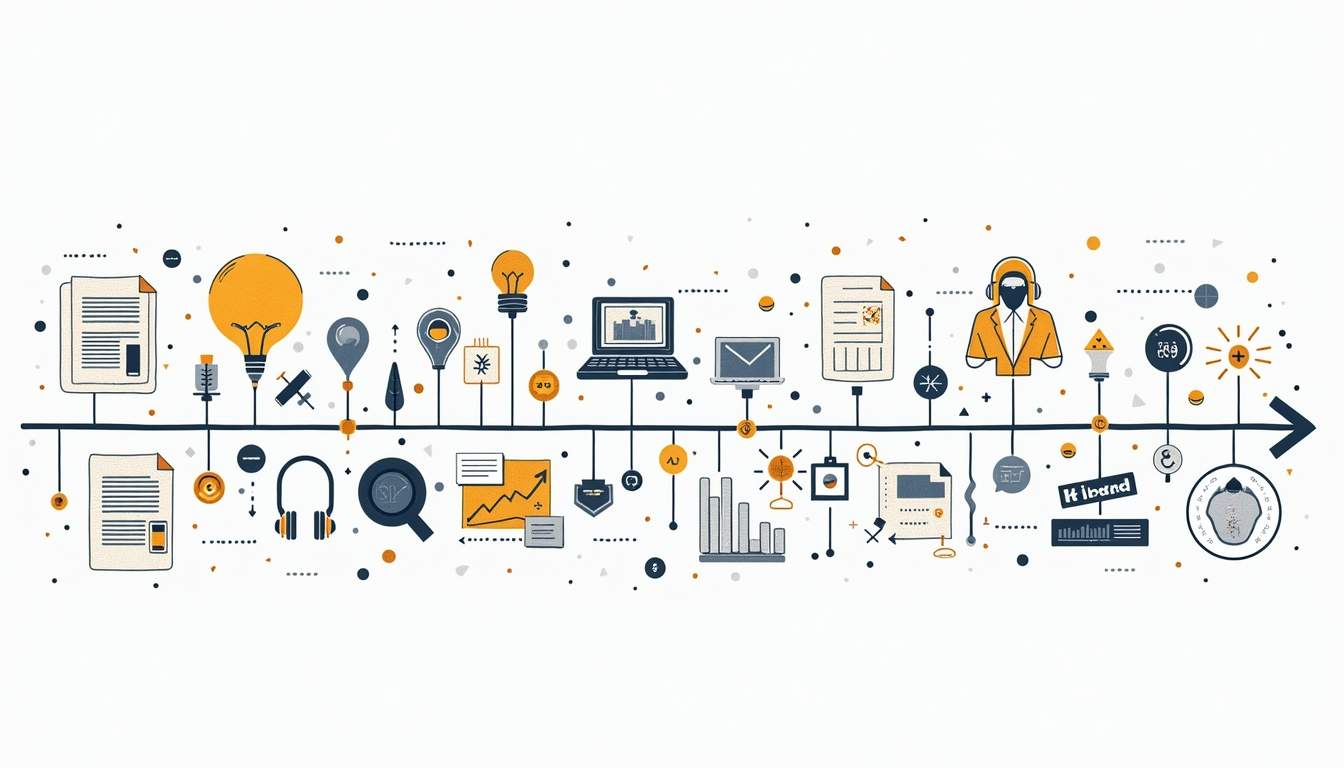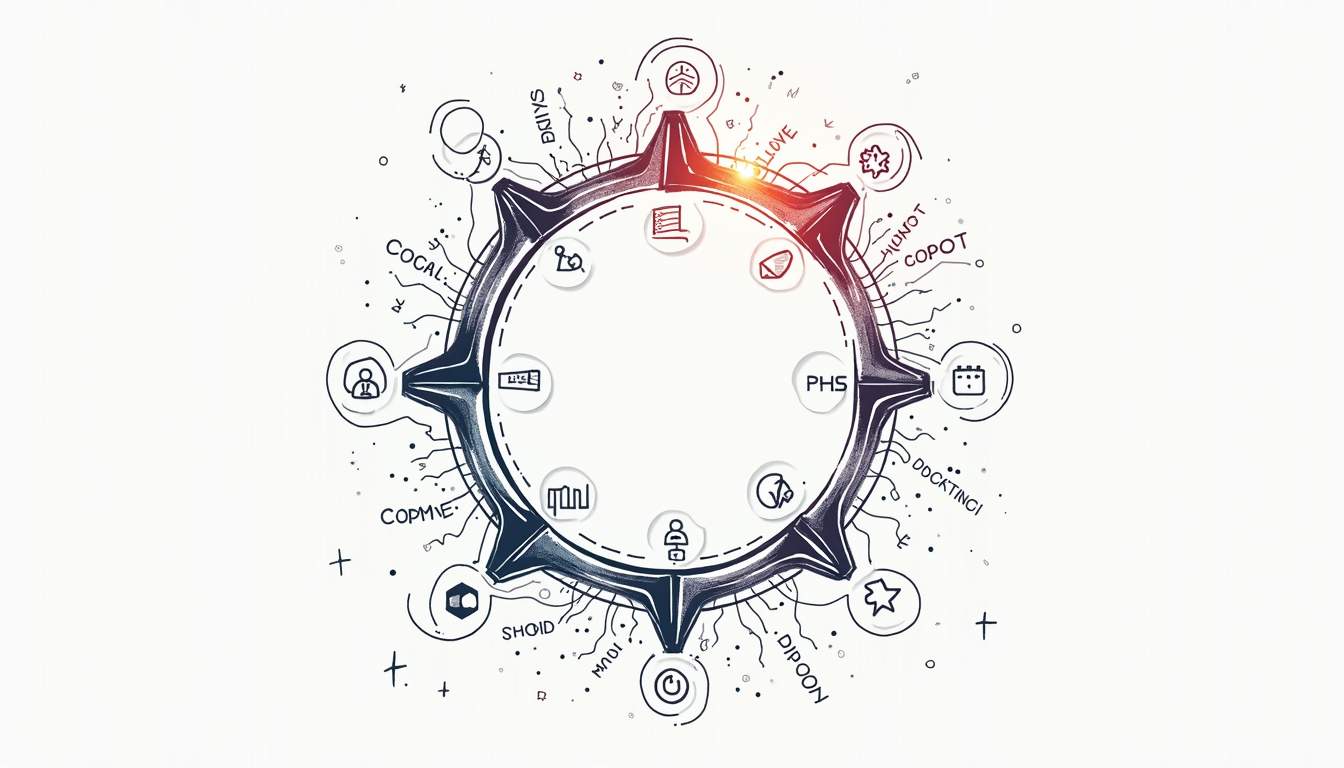The Cyber-Physical Systems (CPS) framework represents a transformative approach to integrating computational elements with physical processes. As technology evolves, so does the need for a structured methodology that guides the development of such systems. This article explores the various facets of the CPS framework, detailing the activities and artifacts involved in transitioning from concept to reality.
Understanding the CPS Framework
The CPS framework is characterized by its multi-disciplinary nature, encompassing aspects of computer science, engineering, and systems design. It aims to create systems that can monitor, control, and optimize physical processes through the seamless integration of computational and physical components. This integration not only enhances efficiency but also enables real-time decision-making, which is crucial in environments where rapid responses are necessary, such as in healthcare, transportation, and manufacturing.
Key Components of CPS
At its core, CPS consists of several key components: sensors, actuators, computational units, and communication networks. Sensors gather data from the physical environment, while actuators execute commands based on computational analysis. The computational units process this information and make decisions, and the communication networks ensure that all components can interact in real-time. For instance, in a smart city application, sensors can monitor traffic flow, while computational units analyze this data to optimize traffic signals, thereby reducing congestion and improving air quality. This interconnectedness illustrates the potential of CPS to enhance urban living through intelligent resource management.
The Importance of Interdisciplinary Collaboration
Developing effective CPS solutions requires collaboration among various disciplines. Engineers, computer scientists, and domain experts must work together to ensure that the system meets both technical and functional requirements. This collaboration fosters innovation and helps address the complexities inherent in integrating physical and digital systems. Furthermore, the involvement of stakeholders from different sectors, such as healthcare professionals in medical CPS or urban planners in smart city initiatives, ensures that the solutions are not only technically sound but also user-centric. Such diverse input can lead to more robust systems that are tailored to meet specific needs, ultimately enhancing the overall effectiveness and usability of CPS technologies.
Moreover, the rapid evolution of technology necessitates continuous learning and adaptation within these collaborative teams. As new tools and methodologies emerge, professionals must stay abreast of advancements in machine learning, data analytics, and IoT (Internet of Things) technologies. This ongoing education is vital to harnessing the full potential of CPS, as it allows teams to implement cutting-edge solutions that can adapt to changing environments and user demands. By fostering a culture of innovation and knowledge sharing, organizations can create resilient CPS that not only respond to current challenges but also anticipate future needs.
Activities in the CPS Development Process
The journey from concept to reality involves several critical activities that guide the development of CPS. These activities can be broadly categorized into design, implementation, and testing phases, each with its own set of tasks and objectives.
Design Phase
The design phase is where ideas begin to take shape. This phase typically involves requirements gathering, system modeling, and architectural design. Stakeholders collaborate to define the system’s objectives, performance metrics, and constraints. Tools such as Unified Modeling Language (UML) diagrams and system architecture frameworks are often employed to visualize the system’s components and their interactions.
Moreover, simulations play a crucial role in this phase, allowing designers to explore different scenarios and validate their concepts before moving to implementation. By utilizing software tools that can model physical behaviors, teams can identify potential issues early in the design process. Additionally, this phase often includes the development of prototypes, which serve as tangible representations of ideas, enabling stakeholders to provide feedback and make informed decisions about the direction of the project.
Implementation Phase
Once the design is finalized, the implementation phase begins. This phase involves coding, hardware integration, and system assembly. Engineers translate the design specifications into actual code, while hardware components are assembled to create a functioning prototype.
During this phase, version control systems and continuous integration practices are essential. They help manage changes in the codebase and ensure that all components work harmoniously. Regular code reviews and testing help catch bugs early, reducing the risk of costly fixes later in the development cycle. Furthermore, collaboration tools and agile methodologies are often employed to enhance communication among team members, allowing for more adaptive responses to challenges and fostering a culture of innovation throughout the implementation process.
Testing and Validation Phase
The testing and validation phase is critical for ensuring that the CPS operates as intended. This phase involves both unit testing of individual components and system-level testing to evaluate overall performance. Real-world scenarios are simulated to assess how the system responds to various conditions.
Additionally, validation against user requirements is crucial. Stakeholders must confirm that the system meets their needs and expectations. Feedback collected during this phase can lead to refinements and adjustments, enhancing the system’s effectiveness before its final deployment. This phase also encompasses stress testing and performance benchmarking, which are vital for understanding how the system behaves under extreme conditions or heavy loads. By rigorously assessing the system’s resilience and reliability, developers can ensure that the CPS not only meets functional requirements but also stands up to the demands of real-world applications.
Artifacts Produced Throughout the CPS Lifecycle
Throughout the CPS development process, various artifacts are created that serve as documentation, guidance, and reference points. These artifacts are essential for ensuring clarity, consistency, and quality in the development process.

Documentation
Documentation is a vital artifact produced during the CPS development lifecycle. It includes requirements specifications, design documents, and user manuals. Comprehensive documentation helps maintain a clear understanding of the system’s objectives, functionalities, and limitations.
Moreover, documentation serves as a communication tool among team members and stakeholders. It ensures that everyone is on the same page and can refer back to previous decisions and designs as needed. This is particularly important in complex projects where multiple teams may be involved.
Prototypes and Models
Prototypes and models are tangible artifacts that illustrate the system’s design and functionality. Prototypes can range from simple mock-ups to fully functional versions of the CPS. They allow stakeholders to visualize the system and provide feedback early in the development process.
Models, on the other hand, are often used to simulate the system’s behavior under various conditions. These artifacts help identify potential issues and optimize performance before the final implementation. By analyzing models, teams can make informed decisions about design adjustments and enhancements.
Test Plans and Results
Test plans and results are critical artifacts that document the testing process. Test plans outline the testing strategy, including the types of tests to be conducted and the criteria for success. Results from these tests provide insights into the system’s performance and highlight any areas needing improvement.
Having a clear record of testing efforts is essential for accountability and transparency. It allows teams to track progress, justify design choices, and ensure that all requirements have been met before deployment.
Challenges in CPS Development
While the CPS framework offers a structured approach to system development, several challenges can arise throughout the process. Recognizing these challenges is essential for mitigating risks and ensuring successful outcomes.

Complexity and Interoperability
The complexity of CPS systems often leads to challenges in interoperability. With multiple components and technologies involved, ensuring that all parts work together seamlessly can be daunting. Different communication protocols, data formats, and hardware specifications can create barriers to integration.
To address these challenges, adopting standardized protocols and frameworks is crucial. This approach can help streamline communication and facilitate collaboration among various components, ultimately leading to more cohesive systems.
Security and Privacy Concerns
As CPS systems become increasingly connected, security and privacy concerns also grow. Vulnerabilities in one component can jeopardize the entire system, making it essential to implement robust security measures from the outset.
Regular security assessments and updates are necessary to protect against emerging threats. Additionally, incorporating privacy-by-design principles can help ensure that user data is handled responsibly and ethically throughout the system’s lifecycle.
The Future of CPS Development
The future of CPS development is bright, with advancements in technology paving the way for more sophisticated and capable systems. Emerging trends such as artificial intelligence, machine learning, and the Internet of Things (IoT) are set to revolutionize the CPS landscape.
Integration of AI and Machine Learning
Artificial intelligence and machine learning are increasingly being integrated into CPS to enhance decision-making capabilities. These technologies enable systems to learn from data, adapt to changing conditions, and optimize performance over time.
For instance, in smart manufacturing, AI-driven CPS can analyze production data in real-time, identifying inefficiencies and suggesting improvements. This level of adaptability can lead to significant cost savings and increased productivity.
Advancements in IoT
The proliferation of IoT devices is also transforming the CPS landscape. With more sensors and actuators connected to the internet, CPS systems can gather vast amounts of data, providing deeper insights into physical processes.
This connectivity allows for more responsive and intelligent systems. For example, in smart cities, CPS can manage traffic flow, optimize energy usage, and enhance public safety by analyzing data from various sources in real-time.
Conclusion
Transitioning from concept to reality within the CPS framework involves a complex interplay of activities and artifacts. By understanding the key components, engaging in collaborative development processes, and addressing challenges, stakeholders can create effective and innovative cyber-physical systems.

As technology continues to evolve, the integration of AI, machine learning, and IoT will further enhance the capabilities of CPS, paving the way for smarter, more efficient systems. Embracing these advancements while maintaining a focus on security, interoperability, and user needs will be crucial for the future of CPS development.
Ultimately, the journey from concept to reality is not just about technology; it is about creating systems that improve lives, enhance productivity, and drive innovation across various sectors. By leveraging the CPS framework, organizations can unlock new possibilities and redefine the boundaries of what is achievable in the realm of cyber-physical systems.
Take the Next Step with Cybersort
Ready to transform your cyber-physical systems and take control of your digital infrastructure? Cybersort offers the tools and expertise to document, structure, and secure the software, assets, and data connections essential to your plant’s operations. Enhance your cybersecurity, ensure safer operations, and embark on an effective digital transformation journey. Don’t wait to improve productivity and drive innovation—book a discovery call with Cybersort today and unlock the full potential of your CPS framework.


